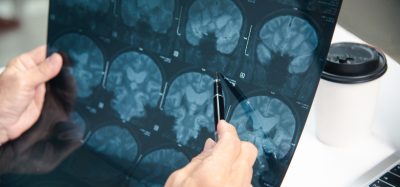Inside the Alzheimer’s study backing stem cells, not drugs
Posted: 26 August 2025 | Drug Target Review | No comments yet
In this first-in-human Alzheimer’s study, Wnt-activated autologous stem cells are delivered intracerebroventricularly (directly into the brain) to address neuronal loss, while also reducing amyloid and tau biomarkers and improving cognition. Early data from this regenerative approach could help early drug discovery teams shape target selection, biomarker development and trial design.


The race to find effective treatments for Alzheimer’s disease has been dominated for decades by therapies targeting amyloid beta and tau proteins. Yet, despite decades of research and new drugs reaching the market, available treatments offer only limited benefit.
One neurosurgeon believes the field needs a new direction – and he is not afraid to pioneer it.
Dr Christopher Duma is a board-certified neurosurgeon with more than three decades of experience and serves as Medical Director of the Brain Tumor Program at Hoag Memorial Presbyterian Hospital in Newport Beach, California. In 2018, he founded Regeneration Biomedical, a clinical-stage company developing a novel stem cell therapy for neurodegenerative diseases. This approach delivers autologous stem cells that have been activated using Wnt – a naturally occurring signalling protein involved in cell growth, communication and tissue repair – directly into the brain’s ventricles, bypassing the blood–brain barrier and aiming to trigger regeneration from within.
Beyond the amyloid hypothesis
For Dr Duma, the decision to move away from amyloid- and tau-focused drug development came from years of clinical frustration.
“We believe these are byproducts of cell death rather than root causes. To truly alter disease progression, we need to address the underlying cell loss, and that’s where stem cell therapy has the potential to make a profound impact.”
Having treated his first Alzheimer’s patient over a decade ago, he watched as promising drug candidates, one after another, faltered in trials or offered only modest benefit.
To truly alter disease progression, we need to address the underlying cell loss, and that’s where stem cell therapy has the potential to make a profound impact.
The alternative – cell therapy – came into focus through his work in national stem cell policy and evolving surgical techniques. Adipose-derived mesenchymal stem cells, he explains, offer both accessibility and therapeutic promise. By reprogramming these cells with a proprietary Wnt activation protocol, the aim is to not only replace lost neurons but also stimulate the brain’s own repair mechanisms.
For the drug discovery field, approaches like this are significant because they explore entirely new therapeutic pathways rather than incremental improvements on existing drug classes. Early clinical evidence from regenerative approaches can inform target validation, guide biomarker development and shape future trial design. By demonstrating both cognitive benefit and biological changes, therapies such as Duma’s provide a proof of concept that can influence the direction of research pipelines well before large-scale commercialisation.
First-in-human results
So far in its Phase I clinical trial, the company has treated seven patients with mild-to-moderate Alzheimer’s disease. Each underwent a minimally invasive liposuction to harvest abdominal fat. Stem cells were then extracted, activated and delivered into the brain’s ventricular system via an Ommaya reservoir – a small device implanted under the scalp that enables precise delivery of treatments into the brain’s fluid-filled spaces, such that the cells disperse widely and penetrate all recesses of the brain.
The early findings were significant:
- 80 percent of patients at 12 weeks post injection showed improvements in Alzheimer’s Disease Assessment Scale-Cognitive Subscale (ADAS-Cog) scores
- 60 percent of patients at 28 weeks post injection showed improvements in Mini-Mental State Examination (MMSE) scores
- Reductions in both phosphorylated tau tangles and amyloid plaques were observed as early as 4 and12 weeks respectively
Unlike most drugs that are unable to cross the blood–brain–barrier, we inject the stem cells directly into the brain’s ventricles, allowing them to reach affected areas and stimulate the innate stem cells already present.
Equally significant, no serious adverse events related to the injections were reported, not even a headache.
“Unlike most drugs that are unable to cross the blood–brain–barrier, we inject the stem cells directly into the brain’s ventricles, allowing them to reach affected areas and stimulate the innate stem cells already present.”
These results build upon an earlier pilot study approved by an Institutional Review Board (IRB) – an independent ethics committee that oversees human research – where cognitive gains were seen even in late-stage Alzheimer’s patients and mobility improved in patients with progressive multiple sclerosis.
Understanding the mechanism
While the precise mechanism of action remains hypothetical, Dr Duma points to the role of Wnt signalling in enhancing stem cell communication and reducing inflammation. The intraventricular route ensures broad distribution, potentially re-engaging dormant repair processes in the brain.
The use of autologous cells eliminates the risk of immune rejection, and adipose tissue offers a far less invasive harvest than bone marrow.
The cells can also be cryopreserved for future booster injections, an approach Dr Duma anticipates will be essential for maintaining and possibly enhancing long-term benefit. A Phase II trial is planned for early 2026, in which patients will receive injections every 2 months.
Scaling the therapy
Moving beyond a handful of patients requires more than promising data – it demands rigorous manufacturing and regulatory readiness.
Over the past decade, Regeneration Biomedical has developed proprietary culture media and processing protocols to ensure purity, consistency and compliance. These systems are designed to minimise batch-to-batch variability and enable scalable production.
“As we move into expanded trials, we will work closely with regulatory agencies to ensure safety and standardisation.”
The plan includes opening additional clinical sites capable of harvesting, processing and delivering the therapy using the company’s protocols, making it accessible to more patients without sacrificing quality control.
Procedure and patient journey
The treatment process begins with a short outpatient liposuction to obtain adipose tissue. The harvested cells are isolated, expanded and selected for Wnt expression in the lab before being injected into the brain’s ventricles.
This is performed using an Ommaya reservoir, a neurosurgical device with decades of safe use in oncology and infectious disease settings.
Recovery is typically swift, and early cognitive changes may be seen within weeks. Long-term maintenance is expected to involve periodic booster doses using the patient’s own previously stored cells.
Implications for the next decade
Dr Duma believes stem cell therapy could change the way neurodegenerative diseases are treated over the next 5–10 years. Rather than simply alleviating symptoms, the goal is to restore lost function and halt progression.
Stem cell therapy has the potential to shift how we treat neurodegenerative diseases, from symptom management to actual cellular regeneration.
“Stem cell therapy has the potential to shift how we treat neurodegenerative diseases, from symptom management to actual cellular regeneration. Targeting a single by-product of cell death with a monoclonal antibody is not sufficient to solve the complex problem of Alzheimer’s.”
While much of the current spotlight falls on induced pluripotent stem cells and haematopoietic stem cells, Duma stresses the advantages of adipose-derived mesenchymal stem cells – an abundant, easily harvested resource that avoids many ethical and immunological concerns.
As regulatory frameworks adapt and scientific validation grows, he foresees a future where personalised, biologically tailored cell therapies are routine in neurology clinics.
The broader impact
Alzheimer’s is only the beginning. The same approach is being explored by Dr Duma for Parkinson’s disease, amyotrophic lateral sclerosis (ALS), traumatic brain injury, multiple sclerosis and stroke.
Given the common thread of neuronal loss and inflammation across these conditions, Duma sees the possibility of a platform technology adaptable to multiple indications.
A career defined by innovation
Beyond his stem cell work, Dr Duma is known for developing the patented Gamma Knife “Leading Edge” technique, a radiosurgical method designed to halt the migration of malignant gliomas. He has been performing deep brain stimulation (DBS) since its FDA approval in 1998, giving patients with Parkinson’s and Essential Tremor life-changing relief from movement disorders.
He also founded the Music-Heals Project, a non-profit that uses music as therapy and provides community support for patients with neurological conditions.
Dr Duma’s career reflects a consistent focus on expanding treatment possibilities for patients.
Towards wider clinical use
With Phase II trials approaching, Regeneration Biomedical aims to translate its stem cell therapy from surgical use to a reproducible, scalable treatment. The process is complex, but early results suggest it could shift Alzheimer’s care from targeting pathological hallmarks to repairing damaged brain tissue.
Meet the expert


Related topics
Analysis, Assays, Cell Regeneration, Cell Therapy, Central Nervous System (CNS), Disease Research, Drug Discovery Processes, Induced Pluripotent Stem Cells (iPSCs), Neurosciences, Regenerative Medicine, Stem Cells
Related conditions
Alzheimer's disease (AD), Amyotrophic Lateral Sclerosis (ALS), Multiple Sclerosis (MS), Parkinson's disease
Related organisations
Hoag Memorial Presbyterian Hospital, Regeneration Biomedical








